Lyons-Mehama Water District Annual Drinking Water Quality Report 2018
LYONS-MEHAMA WATER DISTRICT
ANNUAL DRINKING WATER QUALITY REPORT
For year ended 12-31-2018
We are pleased to provide you with this Annual Drinking Water Quality Report.
This report contains information regarding the quality of our drinking water for the period of January 1 to December 31, 2018. Our goal is and always has been to provide to you a safe and dependable supply of drinking water.
Why am I receiving this report?*Congress passed the Safe Drinking Water Act in 1974 and gave the U.S. Environmental Protection Agency (EPA) the job of making rules- National Primary Drinking Water Regulations (NPDWR) – to insure that drinking water in the U.S. is safe.*In 1996, Congress passed amendments that require drinking water systems to give consumers important information about their water, including where it comes from, what is in the water, and how your water quality compares with federal standards.*This report is brought to you in accordance with EPS’s 40 Code of Federal Regulations, NPDWR Parts 141 ND 142.*What if I have questions about my water?
This report shows our water quality and what it means. If you have any questions about this report or concerning your water utility, please contact Kelly Namitz at 503.859.2367. If you want to learn more, please attend any of our regularly scheduled meetings. They are held the second Wednesday of each month at 7:00 p.m. at Mehama Fire Hall.
Where does our water come from?*The water provided to the Lyons-Mehama Water District customers comes from the North Santiam River located just below the bridge in Mehama. As water travels over the surface of the land or through the ground, it dissolves naturally occurring minerals and radioactive material and can pick up substances resulting from human or animal activity.*What contaminants might be in water?*Contaminants that may be present in source water before it is treated are microbial contaminants, inorganic contaminants, pesticides and herbicides, radioactive contaminants, and organic chemical contaminants.*Microbial contaminants are viruses and bacteria which may come from sewerage treatment plants, septic systems, agricultural livestock operation and wildlife. Inorganic contaminants, such as salts and metals, can be naturally- occurring or results from urban storm water runoff, industrial or domestic wastewater discharges, oil and gas production, mining or farming.*Pesticides and herbicides are an example which may come from a variety of sources, such as agricultural and residential uses.*Radioactive contaminants are naturally occurring.*Organic chemical contaminants including synthetic and volatile organic chemicals, are byproducts of industrial processes and petroleum productions, and can also come from gas stations, urban storm water runoff, and septic systems.*Do you treat my water?*In 1994 a Slow Sand Filter Treatment plant was built to treat the water. The filters remove most of the microbial contaminants. Chlorine is used to inactivate or kill the microbes and viruses. Caustic soda is added at the end of the treatment process to raise the pH of the water to reduce the corrosion of pipes and plumbing components.*All drinking water, including bottled water, may reasonably be expected to contain at least small amounts of some contaminants. The presence of contaminants does not necessarily indicate that the water poses a health risk. More information about contaminants and potential health effect can be obtained by calling the Environmental Protection Agency’s Safe Drinking Water Hotline at 1.800.426.4791.
TEST RESULTS
Important Definitions:
Action level – The concentration of a contaminant if exceeded, triggers treatment or other requirements which a water system must follow.*Maximum Contaminant Level – The “Maximum Allowed” (MCL) is the highest level of contaminant that is allowed in drinking water. MCL’s are set as close to the MCLAs as feasible using the best available treatment technology.*Parts per million (ppm) or milligram per liter (mg/l) one part per million corresponds to one minutes in two years or a single penny in $ 10,000.00.*Maximum Contaminant Level Goal – The “Goal” (MCLG) is the level of a contaminant in drinking water below which there is no known or expected risk to health. MCLGs allow for a margin in safety.*Important Information*MCL’s are set at very stringent levels. To understand the possible health effects described for any regulated constituents a person would have to drink 2 liters of water every day at the MCL level for a lifetime to have a one in a million chance of having the described health effect.*If present, elevated levels of lead can cause serious health problems, especially for pregnant women and young children. Lead in drinking water is primarily from materials and components associated with service lines and home plumbing. Lyons-Mehama Water District is responsible for providing high quality drinking water, but cannot control the variety of materials used in plumbing components. When your water has been sitting for several hours, you can minimize the potential for lead exposure by flushing your tap for 30 seconds to 2 minutes before using water for drinking or cooking. If you are concerned about lead in drinking water, testing methods and steps you can take to minimize exposure is available from the Safe Drinking Water Hotline or at www.epa.gov/safewater/lead*A source assessment is available for customer’s review. Please refer to the following link for the summary report. http://wwwdeq.state.or.us/wq/dwp/.docs/swasummary/pws00493.pdf
Some people may be more vulnerable to contaminants in drinking water than the general population. Immune-compromised persons such as persons with cancer undergoing chemotherapy, persons who have undergone organ transplants, people with HIV/AIDS or other immune system disorders, some elderly, and infants can be particularly at risk for infections. These people should seek advice about drinking water from their health care provider. EPA/CDC guidelines on appropriate means to lessen the risk for infections by cryptosporidium and other microbiological contaminants are available from the Safe Drinking Water Hotline at 1.800.426.4791.*NOTE: For additional copies of this report to provide to your tenants, please feel free to contact our office at 503.859.2367 or visit our website at www.lyons-mehamawaterdistrict.com
Distributed 06-24-2019


